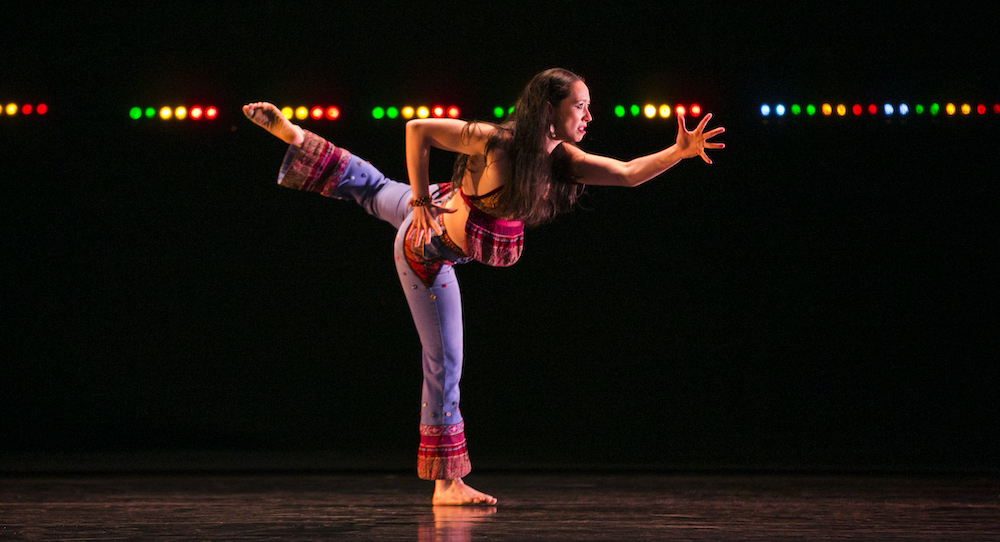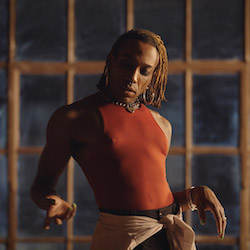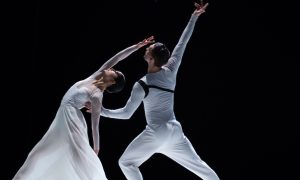Working remotely has been a strange experience for dancers. As we get back to life in person, we’ve caught up with four dancers from four major companies. How are dancers from New York City Ballet (NYCB), Alvin Ailey American Dance Theater, Paul Taylor Dance Company and A.I.M by Kyle Abraham feeling about the transition back to studio and stage?
Creating with your colleagues again is undoubtedly the best part of being back. While A.I.M dancers have been working in pods of three or four since June, having the entire company back to rehearsals for the past few months before presenting a world premiere in Hamburg, Germany, was something special. “Funny enough, it didn’t feel like reconnecting,” says A.I.M dancer Jae Neal. “We try and keep up with one another – or rather, we don’t try. I felt at home. It wasn’t a ‘miss’ or a ‘new’ in that way.”
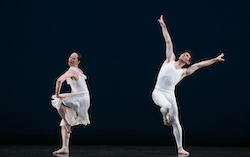
The Paul Taylor Dance Company has also returned to the stage. After having done several outdoor, limited-program shows over the past few months, the company performed its first indoor, evening-length program in early September. Taylor company member Christina Lynch Markham says, “It’s sort of like when you’re warming up in the bullpen, and the gates open and you just go charging ahead. We’ve been waiting for this moment for over a year-and-a-half now.” Although some aspects to returning were a bit more tentative. The whole company came back in January, with a medical task force that set the rules and procedures to follow, like weekly and sometimes even daily testing and masks. Even feeling safe with those protocols in place, Markham says getting back into physical contact with other performers still felt like a bit of an awkward first date. “It felt weird as an artist so used to touching other people’s bodies through movement, especially Paul Taylor’s choreography that is so known for it.” The Taylor dancers slowly built up their contact comfort levels alongside their strength and stamina.
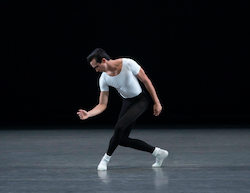
Let’s not forget the other artists we dancers work with day in and day out. NYCB Soloist Sebastian Vallarini-Velez notes that a return to the studio would be incomplete without our pianists, members of the costume shop and stagehands. “These people are essential in maintaining the institution,” he says, “and interacting with them is one of the best parts of my work.” Of his fellow dancers, he says “Returning into this environment after a year-and-a-half away, I can feel the camaraderie a little bit more. The studio can sometimes be a cold environment, but it became a warmer and more welcoming one post-pandemic. I think a lot of us grew out of the pettiness and superficiality, allowing us to be there for one another more genuinely.”
The Alvin Ailey American Dance Theater reunion was definitely a warm reception, according to dancer Khalia Campbell. “Anytime you’ve been away from a group of people you consider family, and you finally see them, it’s always immense joy – and some tears.”
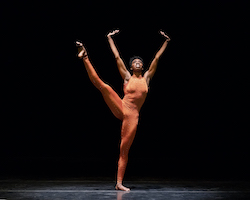
Ailey, NYCB, American Ballet Theatre, Ballet Hispánico and Dance Theatre of Harlem kept that community spirit alive by all uniting (socially distanced, of course), and sharing the outdoor stage at the BAAND Together Dance Festival in August.
Zoom did its job, and we’re all grateful for whatever ways we were able to keep in touch with our artistic worlds throughout the pandemic, but we all know screens aren’t comparable to the real life creative community. Says Neal, “When you’re on Zoom in your own home space, you can get in the habit of getting really comfortable, and not so attached to the work at hand. It’s easy to find a lot of distractions when you just roll out of bed, walk into the other room, and open a laptop. You’re not stepping out of home and into the work.” Not to mention tiny New York City apartments. “You get into a habit of rehearsing things more in your head when you’re on Zoom; it’s less physicalized. Communicating ideas through the body is what we do, and I can’t really get to that concept when I’m at home.”
The energy just isn’t there. The Paul Taylor dancers are a vocal bunch, and Markham notes, “There’s a lot of ‘Save it for nothing; go for it!’ You miss that on Zoom.”
So what did our dancers miss the most while away from the studio and stage? From a sense of focus and intention, to inserting our personalities into our artistry, to being inspired by our colleagues and able to share and create with them in real time, dance offers us so many facets of fulfillment. One common answer from our dancers was that they miss their audiences. “The clapping and the excitement of cheering was extremely fulfilling,” says Campbell. But praise isn’t the important part, she continues. “I missed the human interaction, the exchange with our audiences. And the behind-the-scenes of it all. The rituals, the nerves, the huddles; it was great to experience that again.”
Markham concurs, “I don’t think the audience sometimes realizes how important they are. I feed off of them. You hear people coughing, unwrapping a candy wrapper, touching the program, hushing when the house lights turn off – those things are both nerve-wracking and grounding. I’m looking forward to those butterflies.”
Keep an eye out for these companies’ upcoming performances! After over a year away from live shows, let’s go be the audiences these artists have missed. We’ve missed them, too! Check out each company’s website to learn more about their upcoming programs.
By Holly LaRoche of Dance Informa.


